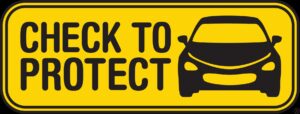Overall
(Revised 5/11/11)
- In 2009, California’s traffic fatalities decreased 10.3 percent (3,434 vs. 3,081) – reaching their lowest level since the federal government began recording traffic fatalities in 1975. **
- California 2009 Mileage Death Rate (MDR) – fatalities per 100 million miles traveled is 0.95, and marks the first time California has been below 1.0. California is much better than the national 1.14 MDR. **
Alcohol
(Revised 3/18/11)
- Alcohol-Impaired Driving Fatalities (fatalities in crashes involving at least one driver or motorcycle operator with a Blood Alcohol Content (BAC) of 0.08 or greater) decreased 7.6 percent from 1,025 in 2008 to 950 in 2009. Since 2005, alcohol-impaired fatalities have dropped a staggering 26.8 percent.**
- California’s alcohol-impaired driving fatality rate dropped from 0.34 in 2007 to 0.31 in 2008. California’s rate is much better than the national average of 0.40. Of the five largest states in terms of total traffic fatalities, (CA, FL, TX, GA, & NC), California has the best rate.**
- As a percent of total fatalities, alcohol impaired fatalities increased from 30% in 2008 to 31% in 2009. This number has remained virtually unchanged in the past five years. California is slightly better than the national average of 32 percent.**
- In 2009, the 21-24 age group had the highest percentage of drivers in fatal crashes with BAC levels of .08 or higher – 34% (the same as 2008 and up from 31% in 2007).
- Statewide DUI arrests decreased 3 percent from 214,811 in 2008 to 208,531 in 2009.
- California’s statewide DUI conviction rate for 2008 is 79 percent. DMV Annual DUI MIS Report – January 2010.
Drugs
(Revised 4/04/11)
- In 2009, 1678 drivers were killed in crashes, of whom (1,491) were tested for drugs after death. The federal government reports that 388 tested positive for “drug involvement”, or 23% of all drivers.
- The first ever “National Roadside Survey of Alcohol and Drug Use by Drivers”, conducted by NHTSA, found that 16.3% of nighttime drivers were drug-positive, with marijuana (THC) at (8.6%) being the most commonly detected drug.
- In 2009, 88% of fatally injured drivers were tested for the presence of drugs. Six states had a better testing rate ‘ New Mexico 100%, North Carolina 99%, Hawaii 98%, West Virginia 95%, Nevada 94%,and Washington 89%.
- In 2009, 83% of fatally injured drivers were tested with known results. Only six states were better ‘ New Mexico 99%, Hawaii 98%, West Virginia 95%, Washington 89%, Vermont 85%, and Maryland 84%.
- In fall 2010, six cities in California (Anaheim, Bakersfield, Eureka, Fresno, San Rafael, and Torrance) conducted nighttime weekend “voluntary” roadside surveys primarily to gather data on marijuana use among nighttime drivers. The results were that 8.4% of the drivers providing oral fluid were positive for marijuana and 7.6% of the breath tested drivers tested positive for some amount of alcohol.
Occupant Protection
(Revised 4/13/11)
- California’s 2010 seat belt usage rate is 96.2 percent – up from 95.3 percent in 2009. NHTSA estimates that 1,365 Californian lives were saved at the current seat belt use rate. California’s 96.2 percent seat belt use rate is much higher than the national average of 84 percent.
- In California, the percent of restrained passenger vehicle occupant fatalities (all seat positions) increased from 58% in 2008 to 60% in 2009. California is much better than the national average of 43% and no state is better than California. NHTSA estimates that about half or 320 of the 639 known unrestrained fatalities would be alive today had they simply buckled up.**
- California’s child safety seat usage rate reached a record high of 95 percent in 2010, up from 90.9 percent in 2009.
- Passenger vehicle occupant fatalities (age 0-8) increased 35.4 percent from 42 in 2008 to 65 in 2009.**
- Passenger vehicle occupant fatalities (age 4 and under) increased 26.5 percent from 25 in 2008 to 34 in 2009.**
Teen Safety
(Revised 3/18/11)
- Teen seat belt use increased from 91.1 percent in 2009 to 94% in 2010. Monterey County recorded the lowest seat belt use rate (86.8 percent), while Kings County had the highest teen seat belt use rate at 99.2 percent.
- Drivers age 20 or younger involved in fatal crashes dropped 18.6 percent from 527 in 2008 to 429 in 2009.**
- In 2009, the percent of unrestrained passenger vehicle occupant “teenaged” fatalities was 47 percent. Of the five largest states in terms of total traffic fatalities, (CA, FL, TX, GA, & NC), California has the best rate. Since restraints are about 50 percent effective in preventing a fatality, NHTSA estimates that 41 dead California teens would be alive today had they simply buckled up.**
- Teen driver fatalities (age 16-19) decreased 39 percent from 154 in 2008 to 94 in 2009. Males make up 75 percent of teen driver fatalities. Since 2005, teen driver fatalities have dropped 57 percent.**
- Teen motor vehicle fatalities (age16-19) decreased 11.1 percent from 290 in 2008 to 258 in 2009. Since 2005, teen motor vehicle fatalities have dropped 41 percent.**
Motorcycle Safety
(Revised 4/13/11)
- Motorcycle fatalities decreased 29.6 percent from 560 in 2008 to 394 in 2009. The 2009 decline is the first since 1998, marking the end to an 11-year, 175 percent increase.
- Total motorcycle registrations decreased less than one percent from 809,129 in 2009 to 808,634 in 2009. (DMV)
- In 2009, 69.4% of motorcycle operators involved in fatal collisions were at fault and 58.7% of motorcycle operators involved in injury collisions were at fault.*
- Motorcycle fatalities per 100,000 motorcycle registrations fell dramatically from 68 in 2008 to 49 in 2009. This rate had been relatively steady, averaging 68 from 2005 through 2008.
- The percentage of motorcycle operators killed with a Blood Alcohol Content (BAC) of 0.08 or greater decreased from 27 percent in 2008 to 23 percent in 2009.**
- The percentage of motorcycle operators killed that were improperly licensed decreased from 37 percent in 2008 to 32 percent in 2009.
Pedestrian and Bicycle Safety
(Revised 3/18/11)
- Pedestrian fatalities dropped 9.2 percent from 620 in 2008 to 563 in 2009.** This is the lowest annual tally of pedestrian fatalities since the federal government began recording fatality statistics in 1975.
- Pedestrian fatalities age 65 and older increased 14.6 percent from 123 in 2008 to 144 in 2009.**
- Bicycle fatalities decreased 9.2 percent from 109 in 2008 to 99 in 2009 – lowest since 1984.**
Previous Years
*Data Source ‘ Statewide Integrated Traffic Records System (SWITRS)
**Data Source ‘ Fatality Analysis Reporting System (FARS)











